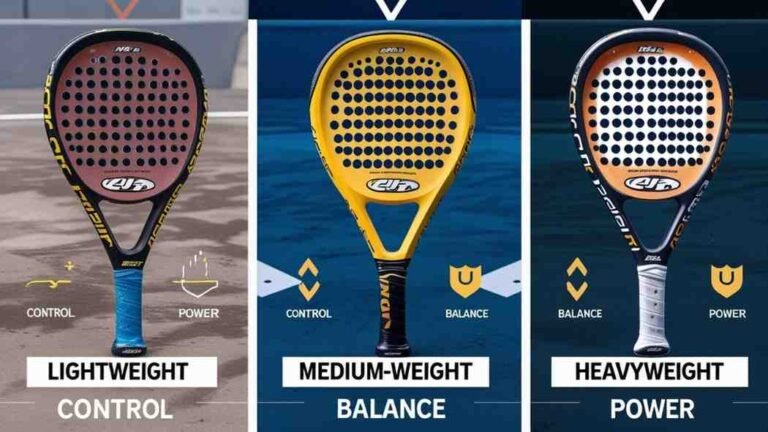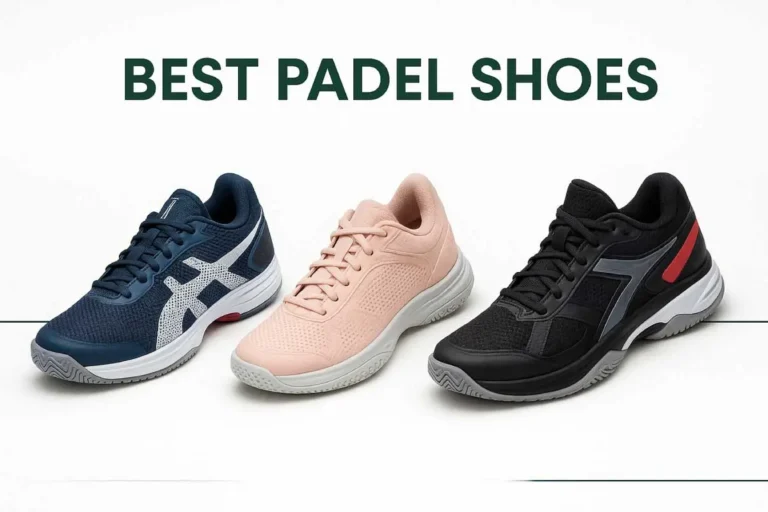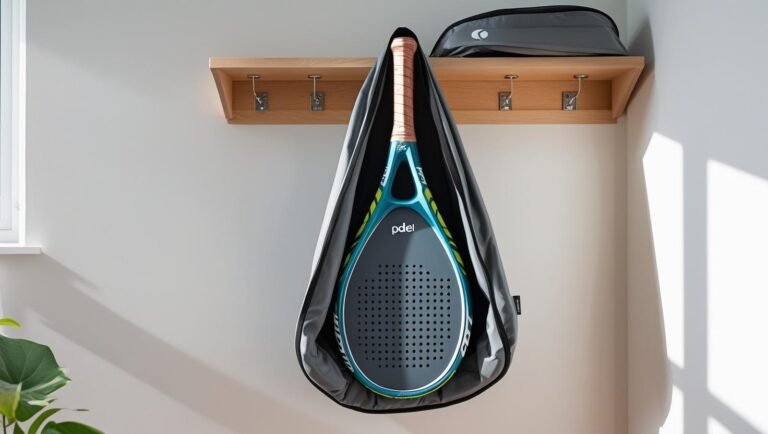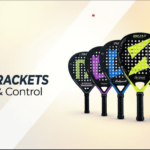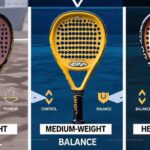Want a shortcut? Take a quiz and find your perfect Padel Racket in 30 secs.
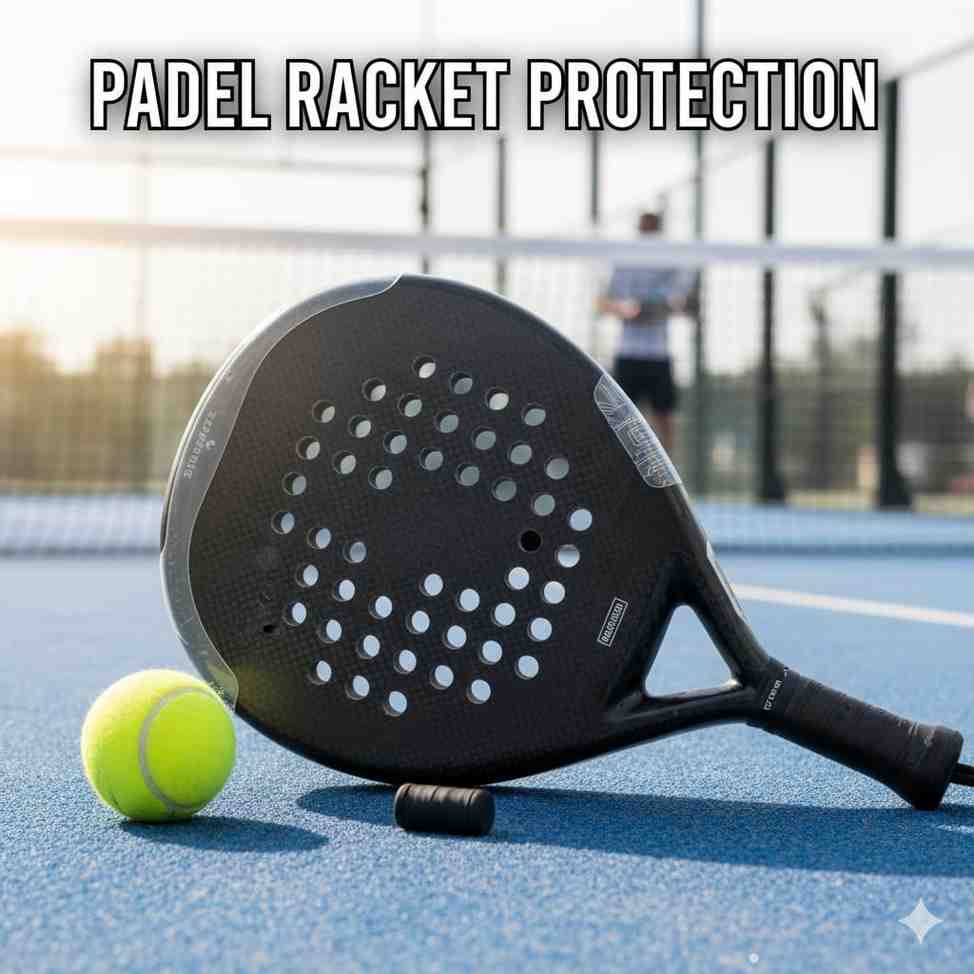
Racket Protectors & Dampeners – Do Padel Players Need Them 2026?
Racket protectors in padel shield the frame from cracks and scratches. Dampeners aim to reduce vibration and add comfort. Some players swear by these accessories to protect their gear and avoid injury; however, on the other hand, others believe they add little value.
The truth often sits in the middle. For example, frame protectors guard the racket when it hits glass walls or fences, which happens in almost every match. Padel dampeners, on the other hand, spark debate because the racket has no strings like tennis. Some players feel less strain when using them. Others, however, notice no difference at all.
In this guide, you’ll learn how protectors and dampeners work. You’ll also see their benefits, drawbacks, and when they matter most. By the end, you’ll know if they deserve a place in your padel bag.
Listen to the summary–Racket Protectors & Dampeners
Understanding racket protectors
Racket protectors in padel are adhesive strips or tapes that cover the frame edges. They absorb impacts and prevent scratches or cracks. Players add them because rackets often hit glass walls, fences, or even the ground during play. Without protection, the frame can chip and lose strength over time.
Most protectors use transparent polyurethane tape. It blends with the racket’s design and also adds strong impact resistance. However, some brands offer carbon-fiber stickers. These are tougher but slightly heavier. Extra weight at the head can shift the racket’s balance. As a result, attacking players may enjoy more stability. On the other hand, beginners could find it less comfortable.
By understanding both the materials and their impact on balance, you can select a protector that suits your style. Light tape works well for casual or control-focused players. In contrast, heavier carbon options are better for those who want more durability and power.
Benefits and Drawbacks of Using Racket Protectors Padel
Benefits – Protects Against Glass and Fence Collisions, Prolongs Racket Life, Maintains Resale Value
Using racket protectors, padel offers several advantages for players looking to maintain their equipment while improving performance and comfort:
- Protection from Damage: Frame protectors guard your racket against bumps, scrapes, and abrasions common in padel. Impacts with glass walls, fences, or the court surface can chip or crack the frame, but a protector absorbs these minor shocks, reducing wear.
- Extended Racket Lifespan: By shielding the frame from everyday impacts, protectors, therefore, enhance gear longevity; consequently, they help your racket last much longer and, in turn, reduce the need for frequent replacements.
- Preserves Resale Value: A well-maintained racket keeps a higher resale value. If you upgrade later, a protected frame shows less damage, appealing to buyers.
- Maintains Performance: Lightweight frame protectors are designed not to interfere with handling, balance, or swing. You can enjoy consistent play without compromising agility.
- Style and Customisation: Many protectors, for instance, come in different colours and designs; consequently, they allow players to personalise their racket while, at the same time, adding functional benefits.
- Vibration Reduction: Specifically, some protectors work together with padel dampeners or vibration dampeners to reduce shock on impact; consequently, they offer minor comfort and, in turn, prevent fatigue during extended play
Drawbacks – Can Add Weight and Slightly Change Balance; May Trap Dirt Between Tape and Frame
While frame protectors are highly beneficial, they also have a few downsides:
- Slightly Alters Balance: Adding a protector can marginally increase weight at the racket’s frame, potentially affecting swing dynamics for players sensitive to balance.
- Traps Dirt: Debris can accumulate between the frame tape and the racket, requiring occasional cleaning to prevent scratches.
- Sticky residue: Taking off some protectors can leave sticky stuff on your racket. You need to clean it carefully so the racket does not get damaged.
- Not a Substitute for Proper Care: Protectors, therefore, complement good racket care practices; however, they do not replace careful handling or proper storage.
Using racket protectors helps your racket last longer, stay in good shape, and keep its value. Using them with dampeners makes play more comfortable and protects your racket. They might cause slight changes in balance or trap dirt, but the good things are more important for players who want to take care of their gear.
Ready for More?
- Best padel racket for your playing style
- Best Nox Padel Rackets
- Nox vs Wilson: Which Padel Racket Brand is Better?
- DIY Padel Accessory Hacks – Make Your Own Grips & Protectors
- Head vs Nox: Which Padel Racket Brand is Best for You?
- Why Do Some Padel Rackets Cause Elbow Pain
- Best Junior Padel Rackets for Young Players
- Best carbon fibre padel rackets
- Why Does Padel Racket Weight Matter So Much?
- Padel Goggles & Eye Protection – Staying Safe on Court
- Best Padel Shoes for top players
Vibration dampeners in padel
In tennis, players place vibration dampeners between the strings to reduce the impact of vibration on the racket. These small rubber or silicone pieces cut the buzzing sound and soften the effect. Padel rackets work differently. They have a solid surface with no string bed, so standard dampeners do not fit.
In padel, some players attach anti-vibration devices to the neck or handle of their racquet. These tools claim to absorb shock and reduce stress on the arm. Many players believe that they can lower the risk of tennis elbow.
The debate continues. Some players report less vibration and more comfort. Others insist the effect is too small; indeed, vibrations travel through the entire frame. As a result, the science remains unclear; however, brands continue to promote these devices.
Types of Padel Racket Protectors
Picking the proper racket protectors depends on how you play, how you want it to look, and how much protection you need. Here are the main types commonly used:
Adhesive Tape Protectors
The most common frame protectors are sticky tape made from strong material, often from brands like 3 M. They are light, bend easily, and stick to the racket frame. They help stop shocks and keep the racket from getting worn. These protectors are suitable for players who want a cheap way to take care of their racket.
Transparent Protectors
Transparent frame protectors are perfect for players who want to preserve the original look of their racket. These protectors provide the same protective benefits as tape protectors while keeping the design and branding visible. They also help maintain the racket’s resale value since any scratches or bumps are minimized.
Colored or Embossed Protectors
Players who like to make their racket look nice can use colored or patterned frame protectors. Some have raised designs to help the racket last longer. These protectors combine aesthetics with practical protection against collisions with walls or fences.
Integrated Bumpers
Some high-end rackets, including popular models from Nox, come with integrated bumpers. These are part of the racket frame and help stop vibrations while keeping the frame safe. Built-in bumpers are suitable for players who want less shock without extra weight. They do not change how the racket feels or plays.
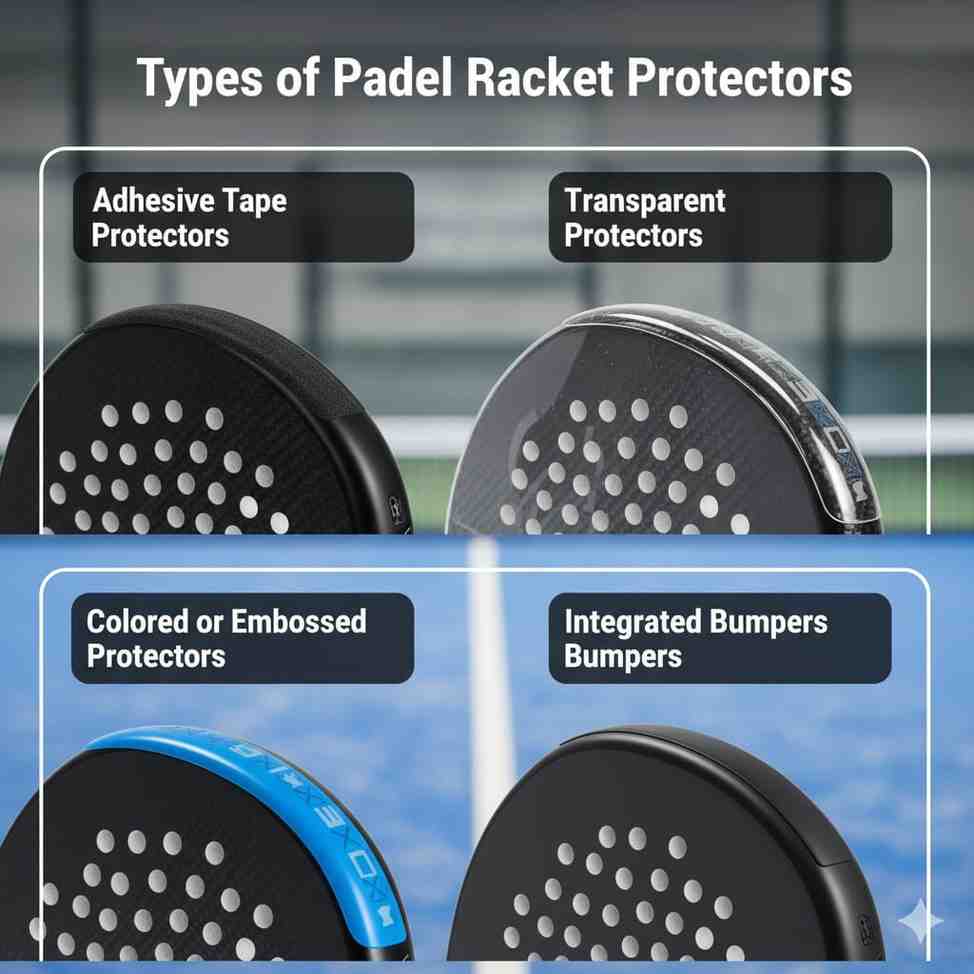
Top Racket Protectors & Dampeners
HEAD Pro Damp Tennis Racket Best for: Reducing Shock and Vibration
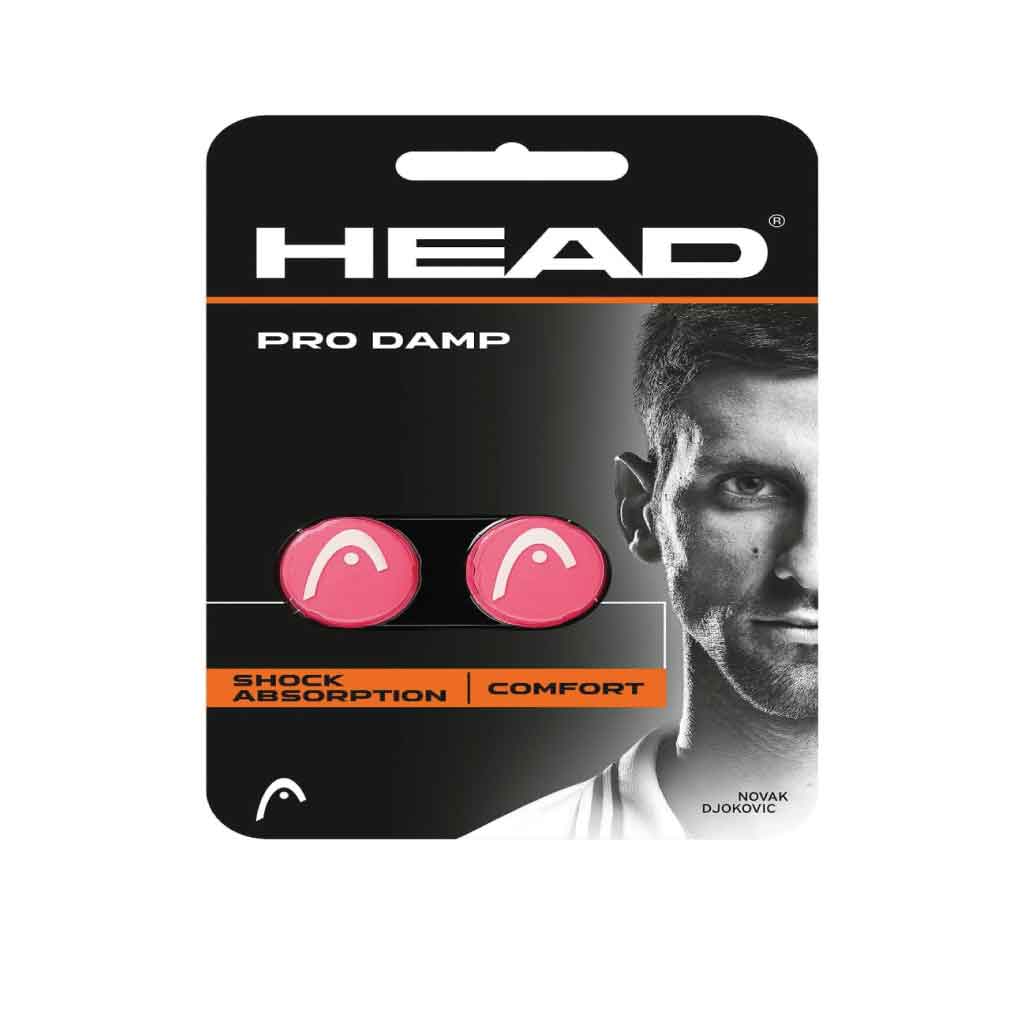
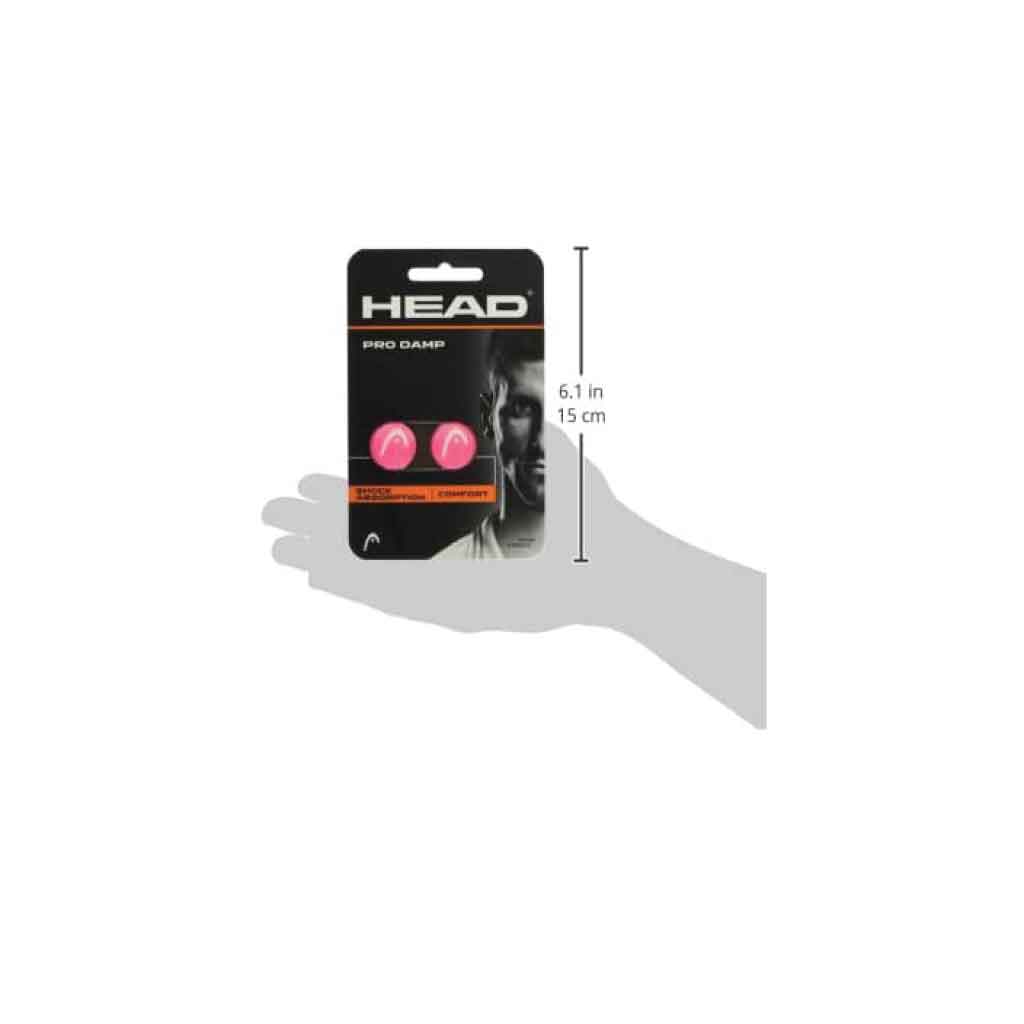
The HEAD Pro Damp Tennis Racket Dampeners help stop vibrations and shocks, making play more comfortable and easier to control. They fit most racket strings and help protect your arm and wrist. Working well with frame protectors, they absorb shocks. These dampeners are light, easy to use, and do not change how the racket feels. Some players may notice they are not very colorful or visible on the racket.
Key Features
- Reduces vibration and shock on impact
- Fits easily into standard racket strings
- Lightweight design does not alter balance
- Compatible with most tennis and padel rackets
WILSON RF Tennis DampenerBest for: Reducing Shock and Improving Comfort

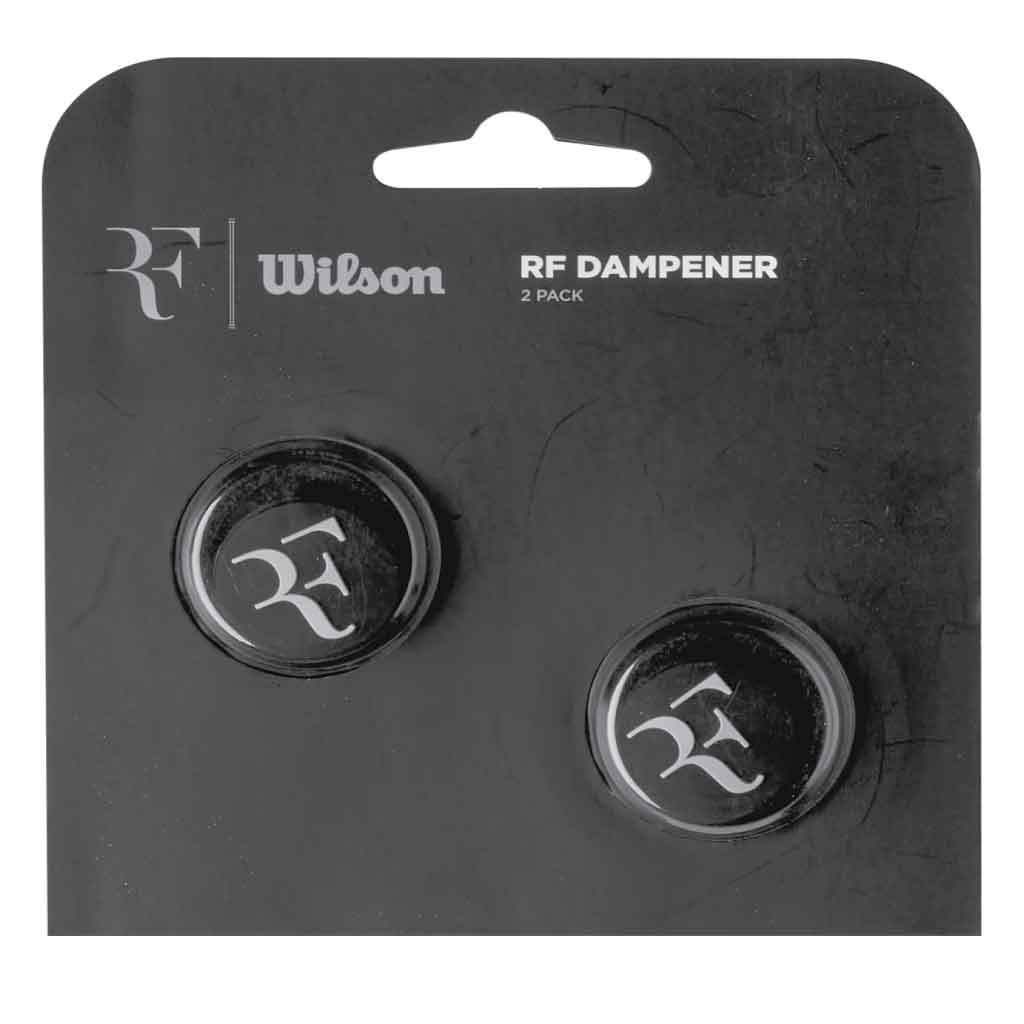
The WILSON RF Tennis Dampener helps stop vibrations and softens hits, making swings more comfortable. This 2-pack fits most racket strings and is compatible with both tennis and padel. It helps protect your arm from strain. The dampeners are light and do not change how the racket feels. They also work well with frame protectors to reduce vibrations and keep your racket playing well. Ultimately, the classic black design is both subtle and functional.
Key Features
- Reduces vibration and shock on ball impact
- Comes in a 2-pack for multiple rackets
- Lightweight and does not alter racket balance
Multi-Color Racket DampenersBest for: Enhanced Vibration Control and Customization
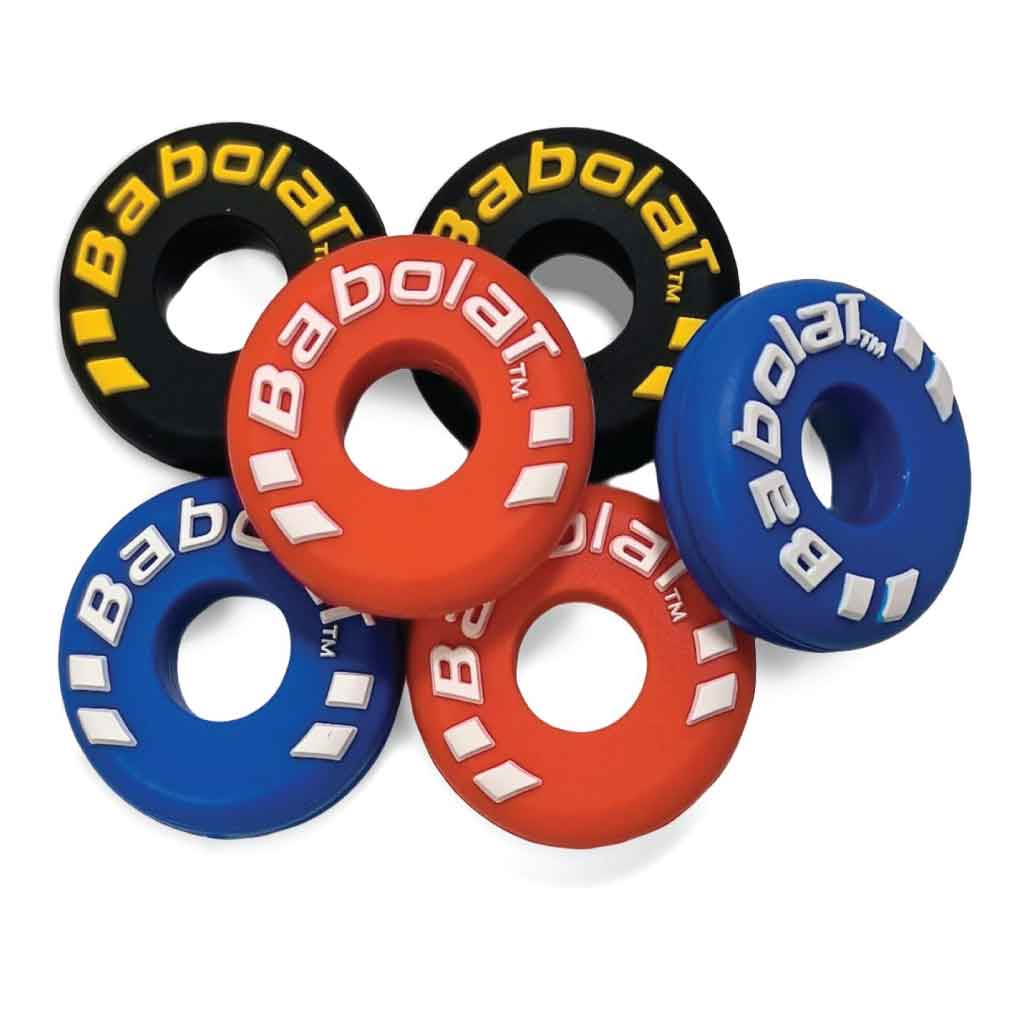
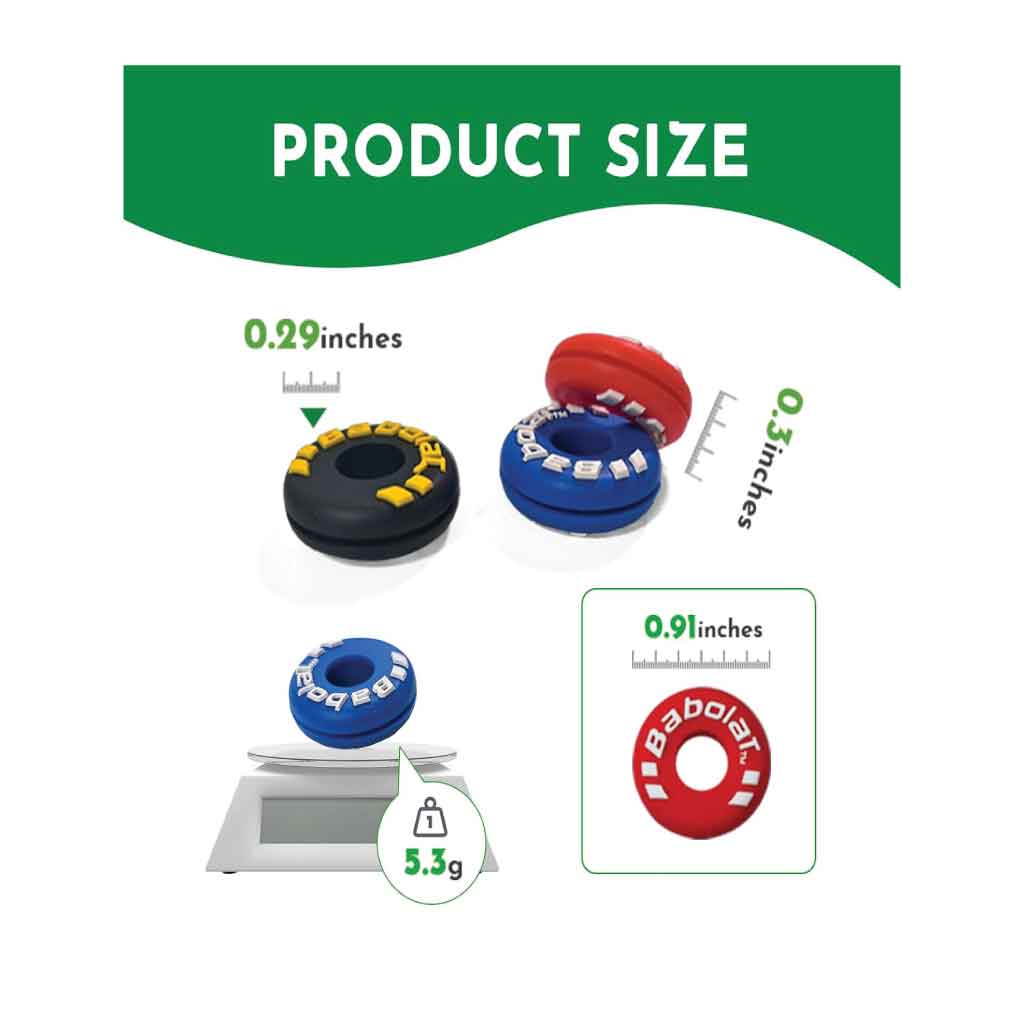
The Multi-Color Tennis Racket Dampeners come in a pack of six. They are made of strong rubber and help stop vibrations, making play more comfortable. They work with both tennis and padel rackets and protect your arm and wrist. The red, blue, and black colors let you make your racket look nice. They are light, easy to put on, and work well with frame protectors without changing how the racket swings.
Key Features
- Reduces vibration and shock on impact
- Lightweight and easy to install
- Compatible with most tennis and padel rackets
Protector BULLPADEL Frame Negro Best for: Frame Protection and Durability
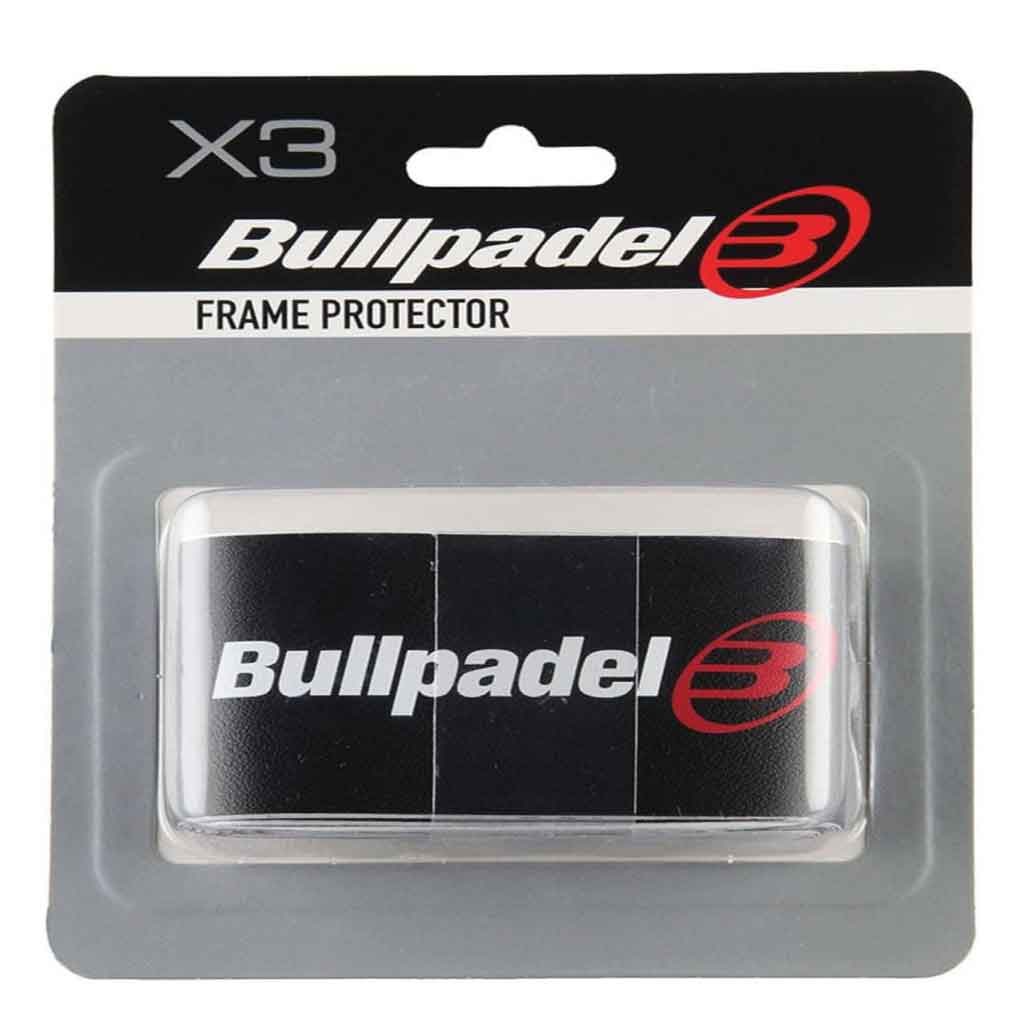
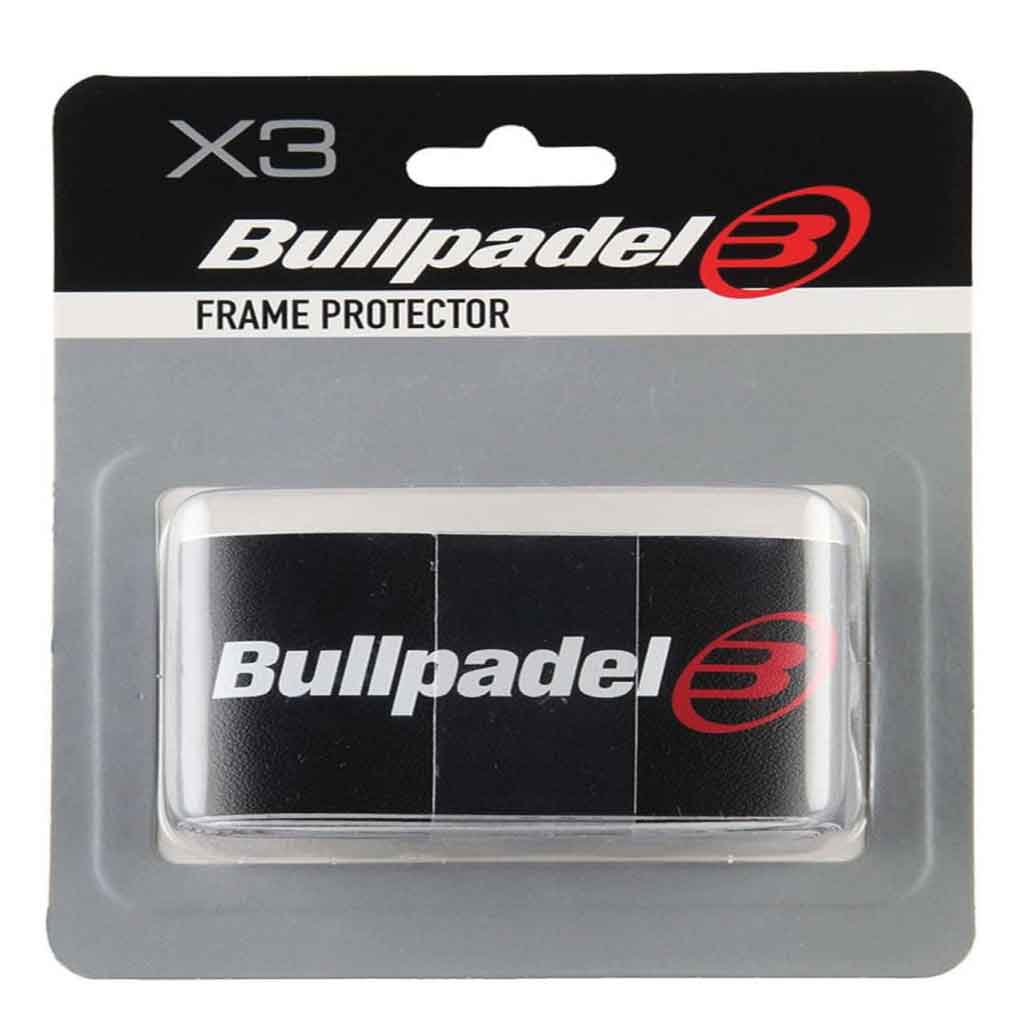
The BULLPADEL Frame Negro protector keeps your padel racket safe from scratches, scrapes, and minor hits. It sticks well to your racket and protects it from walls, fences, or the court. This helps your racket last longer and retain its value. Being light and easy to put on, it does not change how the racket feels, so that you can play well.
Key Features
- Durable black frame protector for padel rackets
- Shields protect from scratches, impacts, and abrasions
- Lightweight design does not change the balance
Do you need a dampener?
Padel players often wonder if a dampener is necessary. The truth depends on your body and playing style. If you are sensitive to vibrations or recovering from an arm injury, trying an anti-vibration device could bring you comfort. It may reduce the shock you sense on every hit.
However, not everyone notices the same effect. For instance, many players say padel dampeners make little difference. Moreover, since the racket surface is solid, vibrations spread through the frame. Consequently, for these players, adding a device only changes how the handle feels, not how the ball responds.
Instead of relying only on a dampener, consider other solutions. For instance, a softer overgrip can absorb impact and, consequently, ease tension on the wrist. Additionally, choosing a lower-shock racket with softer materials also supports joint comfort. Most importantly, however, it is essential to focus on proper technique, as clean strokes, therefore, reduce strain more than any accessory. Ultimately, dampeners may suit some players; however, they are not essential to success. Curious? Try one and see how it feels. Should it improve your game, keep it. Otherwise, focus on enhancing grip comfort and refining your technique instead.
How to apply and remove protectors
How to apply a protector
Adding a racket protector is a quick and straightforward process. First, clean the frame. Then, place the tape, and finally, trim the edges. By following each step in order, you keep your racket safe and neat.
- Clean the frame: First, wipe the edge with a lint-free cloth. Next, use a little isopropyl alcohol to clear dust, sweat, and oils. Finally, let the frame dry fully.
- Measure and cut: Next, place the strip along the curve to measure length. In addition, cut it a bit longer than the rim for full coverage.
- Position and stick: After that, peel part of the backing and press the strip at the 12 o’clock spot. Then work toward the handle in short sections for accuracy.
- Smooth bubbles: At this stage, use a soft cloth or squeegee. Work from the center outward to push out air. Also, press firmly at seams and corners.
- Trim edges: Then, cut slowly with sharp scissors to achieve a clean line. Remove any leftover backing and press the tape flat.
- Set the adhesive: Finally, warm the strip with a low-heat hair dryer. However, avoid overheating the frame.
How to remove and replace a protector
- Taking off an old protector is just as important as applying a new one. If left too long, dirt and moisture can harm the frame.
- Peel slowly: First, lift one corner and pull the strip back at a low angle. Then move smoothly to avoid removing paint.
- Clean residue: Next, wipe leftover glue with isopropyl alcohol or a mild citrus remover. However, never use acetone.
- Inspect the frame: After that, check for grit, cracks, or hidden moisture. Additionally, ensure the surface feels smooth.
- Replace regularly: Finally, replace the protector every 3–6 months, or after heavy play on sandy courts.
Pro tip: While protecting the frame, also use a softer overgrip for comfort and shock reduction.
Conclusion
Using racket protectors, padel, and padel dampeners is an effective way to safeguard your equipment and enhance your playing experience. Frame protectors and vibration dampeners not only prevent scratches and chips but also provide shock absorption that reduces strain on your arm. Simple additions like frame tape can make a big difference in racket care, keeping your gear in excellent condition for longer.
Beyond protection, these tools enhance performance by reducing vibration reduction and overall comfort on the court. Incorporating racket protectors, padel, and vibration dampeners into your setup ensures gear longevity while minimizing wear and tear. For players looking to combine durability with playability, investing in these accessories is a smart choice that benefits both your racket and your game.
Ready for More? You’ll Love This Insight
- How to Choose the Right Padel Racket
- Best Babolat Padel Rackets
- Head vs Babolat: Which Padel Racket Brand is Better?
- Best Padel Rackets for Women
- Best Padel Rackets for Men
- Nox vs Adidas – Which Padel Racket Brand is Right for You in 2026?
- The Difference Between Fibreglass and Carbon Padel Rackets
- How to Replace the Grip on a Padel Racket
- Can You Use a Tennis Racket for Padel?
- Head vs Wilson: Which Padel Racket Brand is Better in 2026?
- Head vs Adidas: Which Padel Racket Brand is Best for You?
- Adidas vs Wilson: Which Padel Racket Brand is Better?
- The Evolution of Padel Rackets Over the Years
- Nox vs Babolat: Which Padel Racket Brand is Better in 2026?
FAQs
When put on correctly, racket protectors do not change how the racket plays. Thin, even protectors keep the racket balanced and easy to handle. Heavy or uneven protectors can adjust your swing and make control harder. Using them with dampeners helps keep hits soft and comfortable, so your racket works well and lasts longer.
